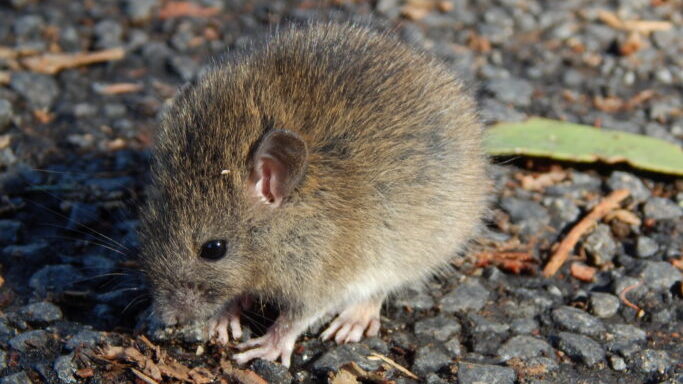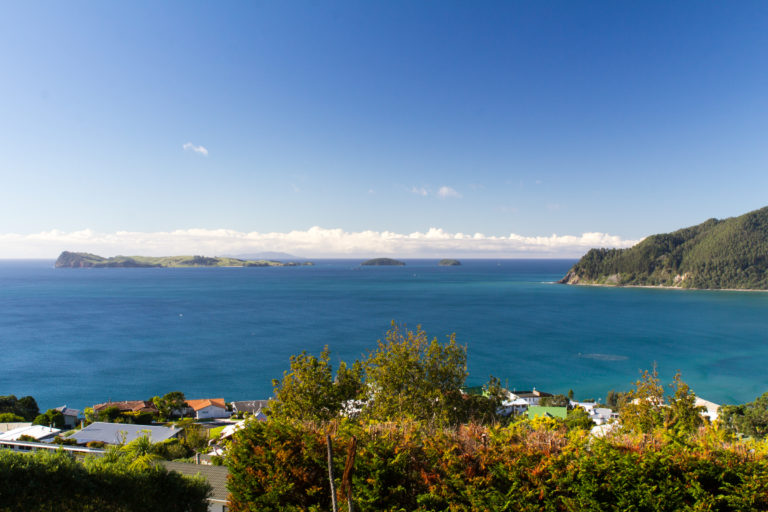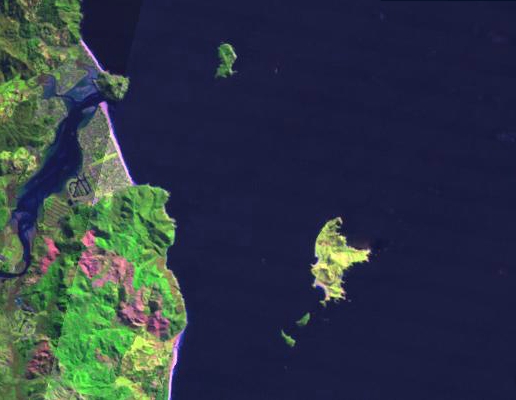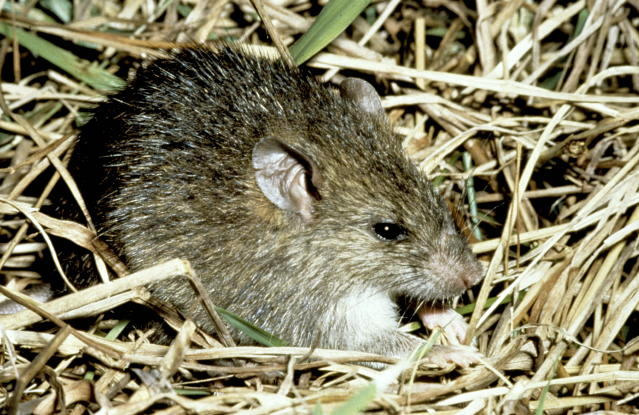The kiore is Aotearoa’s first, smallest and sometimes overlooked rat. It was also our first introduced mammal predator, arriving about 750 years ago with seafaring Polynesian explorers. Because of its arrival history, the kiore is considered both a threat to our native taonga and also a taonga itself – an unusual position for any New Zealand rodent to find itself in.

When the kiore first arrived on our shores it found a land of abundance. It thrived and spread throughout the country. But life got noticeably tougher for the little Polynesian rat with the arrival of ship rats and Norway rats. The bigger rats and other large, predatory mammals out-competed the kiore and preyed on it and nowadays the kiore is absent from most of mainland New Zealand.
So when researchers found a private island where kiore flourished as the only resident rat species, it certainly caught their interest. Here was an ideal environment and opportunity to study kiore behaviour, breeding and genetics, unbothered by bigger rival predators.
Researchers Hayley Ricardo, Deborah Wilson and Priscilla Wehi from Landcare Research, Dunedin have described their initial study of the Slipper Island kiore in an article recently published in the New Zealand Journal of Zoology.

“We investigated reports of an abundant kiore population on Slipper Island (Whakahau), off the east coast of New Zealand’s North Island, in March 2017. We trapped kiore to examine their distribution across a range of habitats with varying degrees of human activity.”
When kiore arrived in Aotearoa in c.1280, the native fauna was dominated by a rich suite of birds (many flightless), diverse geckos and skinks, and numerous large invertebrates, with bats the only extant terrestrial mammals. Imagine what that ancient land must have been like.
“Seabirds were abundant, nesting on offshore islands and the mainland and fruits and seeds were plentiful in the lush temperate and sub-tropical forests. Māori oral tradition indicates that kiore were managed and harvested in forested areas, but were also associated with human settlements in New Zealand, consistent with their commensal status throughout much of their international range.”
Kiore were the sole exotic rodent for about 500 years until European colonisation in the early nineteenth century.
“Kiore spread quickly across mainland New Zealand reaching offshore islands as opportunity arose. However, subsequent introductions of Norway rats and ship rats associated with European colonisation of New Zealand in the late 18th and 19th centuries altered this distribution… Kiore now have a restricted distribution, in parts of Fiordland on the mainland, and on offshore islands.”
Over the last 50 years, rodent damage to native ecosystems has led to targeted rodent eradication efforts.
“However, complete eradication of kiore is not universally desired by New Zealanders, as kiore are highly valued by some Māori as ‘taonga tuku iho’ passed down through generations to the present day. Therefore, a small kiore sanctuary has been established on Mauitaha and Araara Islands off the coast of Northland, with the goal of maintaining a harvestable kiore population at this location.”
Whatever your view on kiore, a better understanding their ecology and behaviour is useful for both management and control purposes.
“Slipper Island (Whakahau) is one of only a few remaining New Zealand offshore islands where kiore appear to be abundant. However, this has not always been the case. In a 1973 survey, Norway rats but not kiore were reported on Slipper Island; kiore were recorded only on the nearby, smaller Rabbit and Penguin Islands. In contrast, in a recent (December 2016) survey of fauna on Slipper Island, Russell and Russell (2018) observed only kiore but not Norway rats. They hypothesised that kiore were abundant and Norway rats no longer present.”
In the current study, the researchers investigated the abundance and distribution of kiore on Slipper Island by trapping them in different habitats, including some closely associated with human activity. They also recorded body mass and length, sex and reproductive maturity of captured kiore.
But first of all, what do we know about Slipper Island?

“Slipper Island is a privately-owned 242 ha island that has been largely cleared of native vegetation. The island is 4 km from the Coromandel Peninsula on the east coast of New Zealand’s North Island . It is predominantly grazed farmland, with a small resort, an old orchard, a campground, several holiday homes, and small remnants of native forest across the eastern cliffs. Two wetlands are fenced to exclude livestock, with restoration of vegetation underway. A ground-based rat control programme in 2002–2005 reduced kiore numbers but did not eliminate them. Apart from kiore and possibly Norway rats, there are no other introduced predatory mammals on Slipper Island.”
In this initial study, the researchers set kill-traps to find out where kiore were located and what they had been eating.
“During 20–24 March 2017, we set Victor Professional snap traps for 1–4 nights on Slipper Island in five locations >450 m apart, each in a different potential kiore habitat, with varying degrees of human activity. Adjacent traps within each group or line were 26 m apart on average (median 24 m, range 1–65 m). The primary objective was to collect kiore carcasses for a dietary study, so traps were placed somewhat irregularly, with additional traps laid on the final day. We placed traps at the resort and wetland locations on the first night and added the remaining three locations on the second night. At the resort, ten traps were set on the first night, and seven traps were added on the fourth night near fruiting trees. At the forest edge site, five snap traps and five Elliott live traps were set.”
Peanut butter mixed with rolled oats was used to bait the traps which were cleared and reset daily. The researchers were also on the lookout for any evidence that Norway rats still survived on the island and collected one sample of unusually large faecal pellets, which were sent to EcoGene for DNA-based diagnostic testing for species identification. The pellets were subsequently found to contain kiore DNA but no Norway rat DNA.
“We trapped 30 kiore in daily trap-checks on all traplines combined. Kiore were readily observed by day and night in exotic fruit trees (feijoa and fig) and grassy places, and we caught four additional kiore, not included in capture indices, as the result of extra evening trap-checks at the resort. Kiore capture indices ranged from 50.0 kiore/100CTN at the campground and 34.2/100CTN in the resort, to 2.5/100CTN in the wetland.”
Captured kiore ranged in weight between 49–111 grams, and head and body lengths ranged between 109–144 mm.
“More than half of all kiore (69%) captured were reproductive, 100% of females (n = 18) and 29% of males (n = 14). We caught a single lactating female and no obviously pregnant females (i.e. with visible embryos). The sex ratio of captured kiore was approximately even (14 males:18 females). We did not observe any rat species other than kiore on Slipper Island.”

“Kiore appeared to be flourishing on Slipper Island in the absence of other rodent species and introduced mammalian predators and were widespread across the island. Our trapping data indicate that kiore can be numerous in human modified habitats in New Zealand, in line with observations of kiore commensality described elsewhere in the ecological literature and narratives of kiore eating Māori crops and plantations, and around settlements.”
Competition for food, predation by other mammals, season and geography all influence population size and dynamics of kiore.
“Kiore numbers fluctuate annually as the result of seasonal breeding. In addition, seasonal resources such as fruit trees may act as feeding ‘hot spots’ that draw in kiore from surrounding areas, perhaps especially young animals that are dispersing. Hence, the high capture rates that we recorded at the resort and campground may be temporary. However, because our traplines were more than 450 metres apart (much greater than kiore home range lengths, which are usually less than 100 metres), any attraction of kiore to the fruiting trees would be unlikely to directly affect kiore abundance at our trap-lines in other parts of the island. Examining habitat utilisation and population fluctuations over a longer period would help reveal some of these dynamics.”
Kiore could potentially be more abundant on Slipper Island, than capture indices suggest.
“The forest edge capture index could have been affected by possibly lower capture success in Elliott traps, which were set only at that location. Ongoing poison efforts have been focused around the resort, where the carcasses of poisoned rats were readily observed during this study. In addition, when traps near resort fruit trees were cleared, some were re-sprung within minutes; such additional captures within a single day were not included in capture indices. The overall high capture index despite poison efforts suggests that conditions for kiore were very favourable on Slipper Island during this study.”
Food abundance may influence the timing of breeding.
“Kiore on Slipper Island were readily observed feeding on abundant cultivated fruit at the resort and campground. Food in the form of seeds is provided by the introduced pasture grasses dominating the island. On Tiritiri Matangi Island, grass seed was a significant seasonal resource that affected kiore breeding and population dynamics. On islands with extensive exotic grass cover, kiore may breed only in spring and early summer when grass seed is present. In contrast, on forested islands, the kiore breeding season tends to extend into autumn. Our captures of few reproductive males, no females that were obviously pregnant and only one that was lactating in early autumn on Slipper Island, which is dominated by exotic grasses, are consistent with these findings. Further, we caught no newly independent juveniles; our smallest captures were a 49 g female and a 59 g male, and it is not unusual to trap much smaller individuals.”
Whether your aim is to manage a taonga population or eradicate a pest species, an understanding of habitat use and behaviour, including neophobia is needed.
“On Slipper Island, kiore were active day and night and showed no sign of neophobia. Some traps set at the base of fruit trees were sprung within minutes of being set, and kiore observed feeding in fig trees were easy to approach closely. These observations contrast with a suggestion of possible neophobia in the same population in springtime (Russell and Russell 2018). At the time of our autumn study, kiore may have been particularly abundant following summer breeding. They therefore may have had to compete for food, hence becoming less neophobic.”
The researchers believe that Slipper Island presents an opportunity for future behavioural studies of kiore at high density in the absence of other rodents.
“In addition, thought could be given to the translocation or maintenance of some individuals from the Slipper Island kiore population as insurance for the protected population on Mauitaha Island, given the high cultural value placed on kiore, and in light of current rodent eradication plans throughout New Zealand as part of the Predator Free 2050 initiative. Maintaining Slipper Island kiore as an insurance population for this taonga species would require a detailed management plan that considers both kiore genetics and potential impacts on human habitation (for example, the need to incorporate targeted rat control). Establishing the genetic diversity of this population, and whether any genetic bottlenecks have taken place, would be a useful first step.”
The full article is published in the New Zealand Journal of Zoology. Only the abstract is freely available online to non-subscribers.
Kiore (Rattus exulans) distribution and relative abundance on a small highly modified island (2020)

